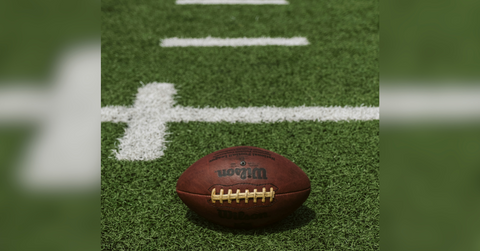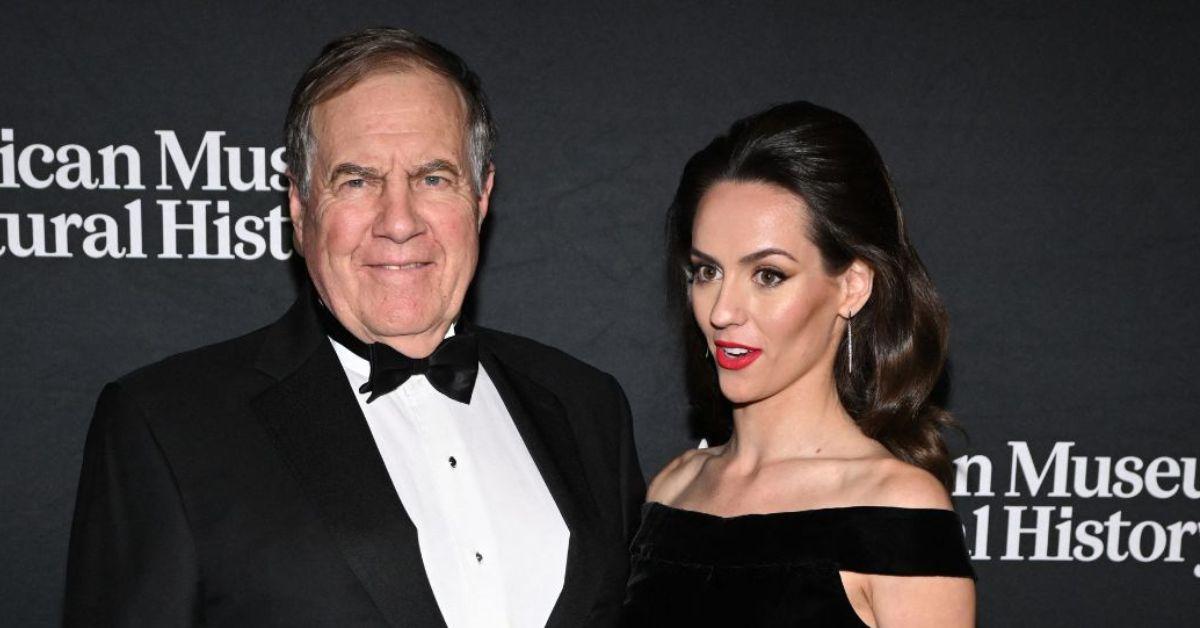MrBeast, YouTube, and São Paulo: The NFL's New Strategy to Reach Global Fans

Oct. 1 2025, Published 2:25 a.m. ET
It would seem like the National Football League is going beast mode. The organization’s strategy to reach global youth seems to be teaming up with one of the biggest online celebrities in the world, like Mr. Beast. The sports organization launched its first-ever YouTube live broadcast. Who better to helm such a momentous event than the biggest YouTuber on the platform?
The National Football League has long struggled with international fame. The sport is huge in the United States, as it befits the name American football. However, until recently, it had barely managed to attract an international audience. The NFL has been aggressively trying to bring in a wider audience, and recently its efforts have begun to bear fruit.
The sports organization’s most recent effort to appeal to a broader audience involves them launching the first-ever YouTube Live Broadcast out of Brazil. Brazil is one of the few countries outside of America where the NFL has a massive audience. Helming the event was James Stephen Donaldson, who fans will know better as Mr. Beast. But this wasn’t the first time Mr. Beast was in the news in reference to the NFL.
Brazil’s NFL Landscape & Why São Paulo Was Chosen
Brazil is now one of the most strategically important markets for the NFL’s expansion. According to NFL executives, there are around 36 million people in Brazil who identify as American football fans — placing Brazil second only to Mexico among international markets. Local research groups similarly estimate 38 million fans in Brazil, making it one of the most enthusiastic international audiences. Yet enthusiasm does not always translate into deep knowledge: analysts estimate that no more than 10% of Brazilian fans have a deep understanding of the NFL’s rules and culture. Because of this, part of the NFL’s strategy in Brazil is educational — through flag football programs, watch-parties, commentary in Portuguese, and influencer-led content. São Paulo was a natural choice for the live YouTube broadcast: it already hosted the 2024 Brazil NFL game (Packers vs. Eagles) with over 47,000 in attendance. Additionally, the prior broadcast in Brazil drew 2.6 billion viewing minutes and ranked as one of the most-streamed programs in September.
In short, Brazil offers both scale and growth potential. The challenge is converting casual curiosity into sustained fandom—and the NFL’s strategy is increasingly local, digital, and creator-driven.
Mr. Beast Teased the NFL Collaboration
Back during the start of September, Mr. Beast may have given us a teaser for the National Football League collaboration. He joked that he is going to buy the league and secure a spot for some of his influencer friends on each team. Some took the joke in the manner that it was delivered; a light-hearted jab at one of America’s most popular and beloved sports orgs. Others were quite upset about the jest, believing it to have been out of line.
It is obvious now that the joke was said in good humor; considering plans for the collaboration must have been made a lot earlier than then. Working with Mr. Beast is a sure way for the National Football League to get the international attention of younger audiences. His YouTube channel has been on top of the YouTube heap for years now, and he has even managed to reach mainstream streaming platforms. But we can’t say that Mr. Beast is the only reason that the NFL is getting attention.
We are sure that online sportsbooks play a big role in the popularity of the sport. American bookies are often available worldwide. When global punters see the NFL tag, they naturally become curious. What is more, all of the sportsbook promos serve as an incentive for those interested to give NFL betting odds a chance. But external forces are not all there is to it. The NFL has been trying restlessly to grow worldwide. The recent surge in international popularity is likely the result of a concerted effort on their part to expand.
YouTube Sports Streams and the Future of the Industry
The announcement that the Chargers vs. Chiefs would be streamed on YouTube came early in September. Many fans were surprised at first, but the shock wore off soon and was replaced by a simple question: Why hasn’t this been done sooner? YouTube is a global platform operating under Google’s authority. There are very few people worldwide who don’t use the video-sharing service in some way. Most use it to watch content already. It is the perfect way for the NFL to grow more popular.
The National Football League’s reach is also quite wide. They’ve managed to secure some pretty cool extra features during the stream. The game itself is, of course, the main attraction. But younger fans might have been thrilled to watch the brand-new MrBeast challenge that was revealed exclusively during the NFL stream. Michelle Khare and Marques Brownlee also had original segments during the broadcast.
What most might be fascinated by is the pre-game collaborative show between YouTubers and NFL professionals. The show included a discussion on the game itself, as well as a slew of other topics that will interest fans of football and influencer culture. As the lines between what it means to be a celebrity grow thinner, we may see more collaborative efforts of this sort come to light. Which begs the question of what we can expect to see in the future.
Numbers & Reactions: Did the Strategy Work?
Viewership & Engagement
● YouTube reported that the Chiefs vs. Chargers game drew 16.2 million U.S. viewers (measured by Nielsen) and an additional 1.1 million internationally, bringing the total to about 17.3 million average viewers.
● This compares favorably with the 2024 Brazil game on Peacock, which averaged 14.2 million viewers and peaked at 15.3 million during the high-scoring second quarter.
● Nielsen also reported that the 2024 Brazil debut logged 2.6 billion viewing minutes and ranked as the 11th most-streamed program in September.
● On social media, the NFL’s official accounts in Brazil saw 12.4 million interactions over two days, nearly doubling rival international sports leagues. The Portuguese account @NFLBrasil alone generated 3.7 million engagements in that same span.
Those numbers suggest strong initial traction. However, some media executives criticized the methodology used to tally viewership, arguing that including out-of-home screens or custom measurement tactics could inflate the numbers.
The Future of Influencers and Sports
Celebrity has become a bit of a loaded term. Once upon a time, it was used to discuss performers, whether they be on-stage entertainers or working in front of a camera. But today celebrity culture is a lot different, largely due to the rise of digital entertainment. We now have celebrity chefs whose fame comes exclusively from the internet. Athletes become YouTubers once they retire, and YouTubers go on to become professional athletes if they are good enough.
The lines between the “old guard” of celebrities and the new school are blurred all the more. So we wouldn’t be surprised if the future of sports and influencers is deeply intertwined. It wouldn’t be surprising to see more collaborative efforts between big brands like the MLB or NBA with the top-rated YouTube legends. There might even be an attempt at international collaboration. We could certainly see one of America’s major sports organizations working together with the T-series to produce a sort of musical advertisement.
Risks, Critiques & What to Watch Moving Forward

While the NFL’s strategy is bold, there are several risks and caveats that merit scrutiny.
Sustainability vs. One-Off Buzz
It’s easy to make headlines with a flashy broadcast. The bigger challenge is keeping fans invested across seasons. Will Brazilian audiences return if future games lack influencer spectacle?
Balancing Gimmicks with Credibility
Overreliance on creators might alienate core NFL fans who prefer traditional broadcast styles. If the mix tilts too far into influencer culture, critics may accuse the NFL of cheapening its brand.
Measurement Transparency
As noted, some in the media have already questioned the metrics used to declare “record viewership.” Without standardized, transparent measurement, comparisons to traditional TV or streaming broadcasts will be contested.
Regulation & Betting Ties
You briefly touched on sportsbook influence. But global betting laws vary; in some markets, aggressive promotions could invite regulatory backlash or ethical scrutiny about the commodification of fandom.
Localization vs. Cultural Distance
Even with translation and local commentary, American football inherently reflects U.S. cultural norms. NFL must adapt — not just superimpose — to local tastes and storytelling styles.
Scalability Outside Brazil
Brazil is a favorable testbed due to existing fan traction. Can the same strategy succeed in countries with little prior NFL exposure, e.g., parts of Africa or Southeast Asia?
What to Watch in the Next 1–2 Seasons
Will the NFL repeat free YouTube broadcasts for other international markets (e.g., South America, Africa)?
Will they host more regular-season games in new non-U.S. locations? (They’ve already committed to 3 games in Rio de Janeiro over five years starting in 2026.)
Do subsequent broadcasts maintain or grow engagement, particularly among younger audiences?
How well will local NFL infrastructure (youth leagues, commentary, merchandising) scale behind the spotlight events?
Final Thoughts
We can all agree that the NFL’s decision to collaborate with YouTube has been a major success. Younger people are far more likely to tune in to the online video sharing platform than a TV program or even an alternative online streaming service. YouTube remains the biggest entertainment website on the internet, and we predict that a lot more “traditional” organizations are going to find ways to work with the newly emerging internet industry. There may even come a time when the NFL launches an official YouTube channel that is dedicated to promoting and discussing the future of the sport.


